Archive for 2011
-
P/E Ratio Hits 22-Year Low
Eddy Elfenbein, September 23rd, 2011 at 11:23 amThanks to the recent plunge in stocks, the P/E Ratio for the S&P 500 fell to 12.05 based on yesterday’s close. That’s the lowest reading since April 17, 1989.
Here’s a look at the S&P 500 (black line, left scale) along with its earnings (gold line, right scale). The two lines are scaled at a ratio of 16-to-1.
-
CWS Market Review – September 23, 2011
Eddy Elfenbein, September 23rd, 2011 at 8:33 amOne day after the Federal Reserve announced “Operation Twist,” the stock market got absolutely slammed. The Dow was dinged for 391 points on Thursday and this comes on top of a 283-point haircut we took on Wednesday, most of which came after the Fed’s announcement.
In the last two days, the S&P 500 has shed 6%. The index closed Thursday’s trading session at 1,129.56 which is the lowest close in a month. We even hit an intra-day low of 1,114.22 which was below the recent closing low of August 8th (1,119.46). However, we haven’t pierced the intra-day low of 1,101.54 from August 9th. At least, not yet. The $VIX, also known as the Fear Index, shot up more than 10% on Thursday to close at 41.35 which is a one-month high.
So what’s going on?
In this issue of CWS Market Review, I’ll give you the low-down on the Fed’s plans and why the market reacted so negatively. Plus, I’ll update you on two very good earnings reports from our Buy List standouts, Oracle ($ORCL) and Bed Bath & Beyond ($BBBY). More importantly, I’ll highlight some outstanding high-yielding stocks that will help us weather the storm.
First, let’s take a closer look at Bernanke’s new plan to get the economy off the mat. At 2:23 pm on Wednesday, the Federal Reserve released its policy statement from this week’s meeting. In it, the Fed said it’s going to replace $400 billion of short-term debt in its portfolio with long-term Treasury debt.
The idea is to push long-term interest rates down with the hope of spurring more borrowing. Ideally, this will also help get the housing market going again. As I explained in the CWS Market Review from two weeks ago, economic recoveries are often led by the housing sector. The problem this time around is that housing is still flat on its back.
Bernanke & Co essentially downgraded the entire U.S. economy. The Fed aims to sell roughly three-fourths of the amount of short-term debt it holds. Investors concluded that if the Fed is going into long-term bonds, well…they might as well ride that wave. So they dumped stocks and crowded into Treasuries. By “crowded,” I mean a massive buying panic.
On Thursday, the yield on the 30-year Treasury plunged to 2.78%. That’s a drop of roughly 50 basis points from Wednesday afternoon. To put that in context, the Long-Term Bond ETF ($TLT) jumped from $114 to $123 in the same time period. (Remember that these are bonds. They’re supposed to be boring and stable.)
As dramatic as the 30-year bond’s drop was, the 10-year plunged to its lowest yield ever. On Thursday, the yield hit 1.72%. That’s a drop of 150 basis points since July 1st. We’re through the looking glass here, people.
I should point out that this recent action is slightly different from the fear trade that I’ve talked about before. The difference is that gold fell on Wednesday and it got hit hard yesterday which is a reflection that real short-term interest rates may rise from the Blutarsky levels they’re at right now. I doubt they’ll go very high, but the Fed is by far the largest player in the T-bill market.
As you might expect, the major losers on Thursday were the cyclical stocks. The Morgan Stanley Cyclical Index (^CYC) dropped 5.22% on Thursday to close at 762.10. Two months ago, the index was at 1,071.84. Both the Energy Sector ETF ($XLE) and Materials Sector ETF ($XLB) lost more than 5.6% on Thursday while defensive areas like Consumer Staples ($XLP) and Healthcare ($XLV) lost “only” 1.90% and 2.02% respectively. (That’s exactly why we call them defensive.)
The folks at Bespoke Investment Group point out that more than half of the stocks in the S&P 500 now yield more than the 10-year Treasury bond.
Some analysts on Wall Street are saying that Operation Twist is a really covert bailout of the big banks. I’m not cynical enough to say that’s the Fed intent, but it will certainly help the banks offload their holdings on Treasury bonds. But I’m doubtful that Operation Twist will spur more mortgage lending or even get people to refinance. Mortgage rates are already at 60-year lows. I don’t see how a few more basis points will help out troubled homeowners.
To be perfectly frank, I think this whole episode shows how limited the Fed’s powers really are. (At the Fed’s website, they included an FAQ on Operation Twist). David Kelly of JPMorgan Funds said, “Ben Bernanke is at least trying to do the right thing. He just doesn’t know what the right thing is.” Ouch!
Still, some of the big banks like Goldman Sachs ($GS) and Morgan Stanley ($MS) plunged to multi-year lows. Bank of America ($BAC) closed at $6.06 on Thursday; Warren Buffett’s warrants have a strike price of $7.14. Our Buy List mega-bank, JPMorgan Chase ($JPM), fell below $30 per share and it now yields 3.42%. JPM is still, by far, the healthiest of the major banks.
I honestly don’t see how Operation Twist will boost the economy, but I’m still not in the Double Dip camp. I think the most likely scenario is that the economy will bounce along at a 1% to 2% growth rate: not enough to get the labor market going but not slow enough to be an official recession.
As rough as this week was for the stock market, I’m happy to say that we had two very good earnings report from our Buy List. After the close on Tuesday, Oracle ($ORCL) reported earnings of 48 cents per share which was two cents better than Wall Street’s forecast.
I was actually expecting even more from Oracle. My mistake was that I didn’t foresee how weak their hardware business would be. Despite my over-optimism, the market reacted positively to the earnings report. On Wednesday, the shares got as high as $30.96. (Bear in mind that they were under $25 just one month ago.) The stock only broke down once the rest of the market did.
Oracle continues to be a very profitable company. Over the past 12 months, Oracle’s cash flow is up 46%. Wall Street was mostly upbeat on the earnings report. For their fiscal second-quarter, which ends in November, Oracle forecasts earnings of 56 – 58 cents per share. That’s a surprisingly narrow range. The Q2 from last year came in at 51 cents per share and that was a very strong quarter; Oracle cautioned investors that the comparisons are much tougher. I continue to rate Oracle a strong buy up to $30 per share.
While I was overly-optimistic on Oracle, I wasn’t optimistic enough on Bed Bath & Beyond ($BBBY). On Wednesday, the company reported fantastic second-quarter earnings of 93 cents per share. That was nine cents more than Wall Street was expecting.
This comes on top of a blow-out earnings report last quarter. BBBY also raised their full-year guidance for the second time this year. Originally, the company told us to expect earnings to grow by 10% – 15% for this year. Then after the big earnings report in June, they raised that forecast to 15% – 20%. Now they’ve bumped that up to 22% – 25%. That translates to full-year earnings of $3.74 – $3.84 per share. In business, good news often leads to good news. Businesses aren’t like ball players who have an “off night” or a “hot hand.” If there’s something good going on, it will tend to last.
At one point on Thursday, BBBY was one of only two stocks in the S&P 500 to be higher for the day. Thanks to Bed Bath & Beyond’s strong earnings and higher guidance, I’m raising my buy price to $60 per share. This is a very solid company.
Some other stocks on my Buy List that look particularly attractive right now (thanks to their high yields) include Abbott Labs ($ABT, yields 3.79%), AFLAC ($AFL, yields 3.75%), Johnson & Johnson ($JNJ, yields 3.68%), Reynolds American ($RAI, yields 5.85%), Sysco ($SYY, yields 4.00%) and Nicholas Financial ($NICK, yields 4.13%).
That’s all for now. Be sure to keep checking the blog for daily updates. Next week is the final week of the third quarter. We’ll also get another revision to the second-quarter GDP report. I’ll have more market analysis for you in the next issue of CWS Market Review!
– Eddy
-
Morning News: September 23, 2011
Eddy Elfenbein, September 23rd, 2011 at 4:50 amG-20 Vows to Tackle ‘Renewed’ Global Risks
ECB Ready to Act Next Month If Outlook Deteriorates
Europe Mulls Increasing Rescue Fund Firepower
Greece on Edge 24 Centuries After First Default
South Korea Regulator Says Some Banks That Flunked Stress Tests Now Sound
Special Report: How to win business in Libya
Crude Oil Rebounds More Than $1.00 Per Barrel
Fed’s ‘Operation Twist’ Fails to Reassure
Treasury Decline After G-20’s Pledge to Tackle Risks Damps Refuge Demand
Whitman Will Stick to Apotheker’s HP Strategies
Sany Roadshow on Course After $3.3 Billion Share Sale Delay
In Rush to Assist Solyndra, U.S. Missed Warning Signs
Old Saturn Plant Could Get a Second Chance
Todd Sullivan: Temp Staffing & Total Employment & Recessions
Stone Street: Is Our Tax System Fair? If Not, Why? — Veronique de Rugy
Be sure to follow me on Twitter.
-
The 2/10 Spread
Eddy Elfenbein, September 22nd, 2011 at 3:52 pmI’m not exactly sure why, but the spread between the two- and ten-year Treasury bonds seems to have a very good track record of predicting recessions.
Notice how the spread goes negative in the months before official recessions (the grey bars). That’s a track record that many economists would envy.
The spread between the two and ten is still wide although it has narrowed over the past several weeks. Still, we’re a long way from the danger zone. That’s why I’m a Double Dip doubter. A recession, of course, will come along eventually, but this point combined with other data (like the ISM) tells me that a Double Dip recession is unlikely in the immediate future.
-
Cyclicals Plunge to a New Low
Eddy Elfenbein, September 22nd, 2011 at 11:22 am -
What Operation Twist Means for Gold
Eddy Elfenbein, September 22nd, 2011 at 11:09 amIn this post, I’m going to explain why I’m right and Larry Summers is wrong.
On a point of economics.
Last October, I unveiled my model for the price of gold (or as I like to think of it, a model for a model). I’m happy to see that the model has held up well since then. It’s one thing to predict the past, but it’s quite another thing for a model to hold up in your out-of-sample period.
However, my gold model is more than just back-testing data. The key insight is that Gibson’s Paradox never went away. It still exists, just in a different form. I got this idea from a 1988 paper by Larry Summers and Robert Barsky, “Gibson’s Paradox and the Gold Standard.”
Where I differ from Summers and Barsky is that I focused on short-term interest rates while they focused on long-term rates. Well, with Operation Twist we got a perfect test of who’s right.
The Fed’s new plan is to sell short-term Treasury bills and buy long-term Treasury bonds. This means that long-rates will be pushed down and short-rates will be pushed up. If gold rises, then Barsky and Summers are right; if gold falls, then I’m right.
Gold is down about $80 today to around $1,730 per ounce.
I said in my original post that the price of gold is basically a political decision. The Fed can change the game anytime they want to. I can’t say whether this will lead to a long-term decline in gold. That will depend on inflation and interest rates. But for now, the gold market is clearly observing the short end of the yield curve.
Here’s a look at my original post:
One of the most controversial topics in investing is the price of gold. Eleven years ago, gold dropped as low as $252 per ounce. Since then, the yellow metal has risen more than five-fold, easily outpacing the major stock market indexes—and it seems to move higher every day.
Some goldbugs say this is only the beginning and that gold will soon break $2,000, then $5,000 and then $10,000 per ounce.
But the question is, “How can anyone reasonably calculate what the price of gold is?” For stocks, we have all sorts of ratios. Sure, those ratios can be off…but at least they’re something. With gold, we have nothing. After all, gold is just a rock (ok ok, an element).
How the heck can we even begin to analyze gold’s value? There’s an old joke that the price of gold is understood by exactly two people in the entire world. They both work for the Bank of England and they disagree.
In this post, I want to put forth a possible model for evaluating the price of gold. The purpose of the model isn’t to say where gold will go but to look at the underlying factors that drive gold. Let me caution that as with any model, this model has its flaws, but that doesn’t mean it isn’t useful.
The key to understanding the gold market is to understand that it’s not really about gold at all. Instead, it’s about currencies, and in our case that means the dollar. Gold is really the anti-currency. It serves a valuable purpose in that it keeps all the other currencies honest (or exposes their dishonesty).
This may sound odd but every currency has an interest rate tied to it. In essence, that interest rate is what the currency is all about. All those dollar bills in your wallet have an interest rate tied to them. The euro, the pound and the yen also all have interest rates tied to them.
Before I get to my model, I want to take a step back for a moment and discuss a strange paradox in economics known as Gibson’s Paradox. This is one the most puzzling topics in economics. Gibson’s Paradox is the observation that interest rates tend to follow the general price level and not the rate of inflation. That’s very strange because it seems obvious that as inflation rises, interest rates ought to keep up. And as inflation falls back, rates should move back as well. But historically, that wasn’t the case.
Instead, interest rates rose as prices rose, and rates only fell when there was deflation. This paradox has totally baffled economists for years. Yet it really does exist. John Maynard Keynes called it “one of the most completely established empirical facts in the whole field of quantitative economics.” Milton Friedman and Anna Schwartz said that “the Gibsonian Paradox remains an empirical phenomenon without a theoretical explanation.”
Even many of today’s prominent economists have tried to tackle Gibson’s Paradox. In 1977, Robert Shiller and Jeremy Siegel wrote a paper on the topic. In 1988 Robert Barsky and none other than Larry Summers took on the paradox in their paper “Gibson’s Paradox and the Gold Standard,” and it’s this paper that I want to focus on. (By the way, in this paper the authors thank future econobloggers Greg Mankiw and Brad DeLong.)
Summers and Barsky explain that the Gibson Paradox does indeed exist. They also say that it’s not connected with nominal interest rates but with real (meaning after-inflation) interest rates. The catch is that the paradox only works under a gold standard. Once the gold standard is gone, the Gibson Paradox fades away.
It’s my hypothesis that Summers and Barsky are on to something and that we can use their insight to build a model for the price of gold. The key is that gold is tied to real interest rates. Where I differ from them is that I use real short-term interest rates whereas they focused on long-term rates.
Here’s how it works. I’ve done some back-testing and found that the magic number is 2% (I’m dumbing this down for ease of explanation). Whenever the dollar’s real short-term interest rate is below 2%, gold rallies. Whenever the real short-term rate is above 2%, the price of gold falls. Gold holds steady at the equilibrium rate of 2%. It’s my contention that this was what the Gibson Paradox was all about since the price of gold was tied to the general price level.
Now here’s the kicker: there’s a lot of volatility in this relationship. According to my backtest, for every one percentage point real rates differ from 2%, gold moves by eight times that amount per year. So if the real rates are at 1%, gold will move up at an 8% annualized rate. If real rates are at 0%, then gold will move up at a 16% rate (that’s been about the story for the past decade). Conversely, if the real rate jumps to 3%, then gold will drop at an 8% rate.
Here’s what the model looks like against gold over the past two decades:
The relationship isn’t perfect but it’s held up fairly well over the past 15 years or so. The same dynamic seems at work in the 15 years before that, but I think the ratios are different.
In effect, gold acts like a highly-leveraged short position in U.S. Treasury bills and the breakeven point is 2% (or more precisely, a short on short-term TIPs).
Let me make this clear that this is just a model and I’m not trying to explain 100% of gold’s movement. Gold is subject to a high degree of volatility and speculation. Geopolitical events, for example, can impact the price of gold. I would also imagine that at some point, gold could break a replacement price where it became so expensive that another commodity would replace its function in industry, and the price would suffer.
Instead of explaining all of gold, my aim is to pinpoint the underlying factors that are strongly correlated with gold. The number and ratios I used (2% break-even and 8-to-1 ratio) seem to have the strongest correlation for recent history. How did I arrive at them? Simple trial and error. The true numbers may be off and I’ll leave the fine-tuning for someone else.
In my view, there are a few key takeaways.
The first and perhaps the most significant is that gold isn’t tied to inflation. It’s tied to low real rates which are often the by-product of inflation. Right now we have rising gold and low inflation. This isn’t a contradiction. (John Hempton wrote about this recently.)
The second point is that when real rates are low, the price of gold can rise very, very rapidly.
The third is that when real rates are high, gold can fall very, very quickly.
Fourth, there’s no reason for there to be a relationship between equity prices and gold (like the Dow-to-gold ratio).
Fifth, the TIPs yield curve indicates that low real rates may last for a few more years.
The final point is that the price of gold is essentially political. If a central banker has the will to raise real rates as Volcker did 30 years ago, then the price of gold can be crushed.
Technical note: If you want to see how the heck I got these numbers, please see this spreadsheet.
Column A is the date.
Column B is an index of real returns for T-bills I got from the latest Ibbotson Yearbook. It goes through the end of last year.
Column C is a 2% trendline.
Column D is adjusting B by C.
Column E is inverting Column D since we’re shorting.
Column F computes the monthly change the levered up 8-to-1.
Column G is the Model with a starting price of $275 (in red).
Column H is the price of gold. It goes up to last September. -
Morning News: September 22, 2011
Eddy Elfenbein, September 22nd, 2011 at 5:21 amFed Outlook, China Rattle Investors
Constraints on Central Banks Leave Markets Adrift
Greece Cuts Wages, Pensions to Ensure Aid Payment
Italian Yield Spread Rises to Euro-Era High
Asia’s Millionaires Form Family Offices
Canadian Dollar Slides To Near 2011 Lows On US Fed’s Operation Twist
Crude Oil Down After Fed Meeting; Shrugs Off U.S. Data
Fed Sees ‘Significant’ Risks as It Eases Policy
United Technologies Agrees to Buy Goodrich for $16.5 Billion
Ouster of Hewlett-Packard C.E.O. Is Expected
Logitech Issues Third Profit Warning In Six Months
BofA’s Drop Below Citi Credit Rating Foreseen: Chart of the Day
U.A.W. Shelves Chrysler Talks and Turns to Ford
Joyless Holiday Retail Forecast
Jeff Miller: More Causal Confusion: The FOMC Decision and the Market Reaction
Phil Pearlman: Network TV Fall Line Up All About Mathematics
Be sure to follow me on Twitter.
-
Investor Quiz
Eddy Elfenbein, September 21st, 2011 at 11:39 pmCan you tell when the Fed’s announcement came out? Look real hard!
The gold line is the S&P 500 and the black line is the Long-Term T-Bond ETF ($TLT).
-
Oracle’s Earnings Call
Eddy Elfenbein, September 21st, 2011 at 5:15 pmHere’s the guidance portion from yesterday’s earnings call from Oracle ($ORCL), courtesy of Seeking Alpha:
Now to the guidance. And as many of you remember, we had a great second quarter last year with New License up 21% on a non-GAAP basis and up 33% and GAAP EPS up 27%. So let me just say that again. New License was up 21%, non-GAAP EPS was up 33% and GAAP EPS was up 27%. So those are pretty tough comparisons, and we don’t expect much help from currency because at this point, it looks like only 1% stays where it is.
New Software License revenue growth is expected to range from 6% to 16% in growth. Hardware Product revenue growth is expected to range from flat to negative 5%. However, we do expect gross margins and profitability of our overall Hardware business to improve during the quarter as we continue to move away from selling low-margin commodity servers and focus on selling engineered systems like Exadata, Exalogic and SPARC Solaris system.
Total revenue growth on a non-GAAP basis is expected to range from 4% to 8%. On a GAAP basis, we expect total revenue growth of 5% to 9%. Non-GAAP EPS is expected to be somewhere between $0.56 and $0.58, up from $0.51 last year. GAAP EPS is expected to be $0.44 to $0.46. This guidance assumes a GAAP and non-GAAP tax rate of 27%. Of course, it may end up being different.
-
Bed Bath & Beyond Beats and Guides Higher. Again.
Eddy Elfenbein, September 21st, 2011 at 4:36 pmWow! Bed Bath & Beyond ($BBBY) did it again.
The company just reported fiscal Q2 earnings of 93 cents per share which was a full nine cents more than Wall Street was expecting. This was another outstanding quarter for them. Three months ago when the last earnings report came out, the company told us to expect Q2 earnings to range between 77 and 82 cents per share (I had expected a range of 80 to 85 cents per share).
Well, they blew that forecast out of the water! For last year’s Q2, they earned 70 cents per share. For this year’s Q2, net sales rose 8.2% to $2.314 billion. The all-important comparable store sales figure was 5.6%. Those are solid numbers. Year-over-year operating and net margins increased for the 10th-straight quarter.
For Q3, the current quarter, Bed Bath & Beyond projects earnings of 82 to 87 cents per share. The Street was at 86 cents. BBBY also raised their full-year guidance to earnings growth of 22% to 25%.
If you’re keeping score at home, this is the second time that BBBY has raised their full-year growth forecast this year. They went from forecasting an earnings increase of 10% – 15% to a revised range of 15% – 20% to the current range of 22% – 25%.
Let’s look at the numbers: For 2010, Bed Bath & Beyond earned $3.07 per share, so the updated forecast translates to a range of $3.74 – $3.84 per share.
Just to give you an example of how strong business has been, let’s compare this past quarter’s numbers with the one from exactly two years ago. In two years, sales are up 20.8%. Net margins have increased from 7.1% to 9.9%. That turns a 20.8% sales increase into a 69.2% profit increase.
Here’s a look at BBBY’s quarterly numbers for the past few years:
Quarter Sales Gross Profit Operating Profit Net Profit EPS May-99 $356,633 $146,214 $28,015 $17,883 $0.06 Aug-99 $451,715 $185,570 $53,580 $33,247 $0.12 Nov-00 $480,145 $196,784 $50,607 $31,707 $0.11 Feb-00 $569,012 $238,233 $77,138 $48,392 $0.17 May-00 $459,163 $187,293 $36,339 $23,364 $0.08 Aug-00 $589,381 $241,284 $70,009 $43,578 $0.15 Nov-01 $602,004 $246,080 $64,592 $40,665 $0.14 Feb-01 $746,107 $311,802 $101,898 $64,315 $0.22 May-01 $575,833 $234,959 $45,602 $30,007 $0.10 Aug-01 $713,636 $291,342 $84,672 $53,954 $0.18 Nov-02 $759,438 $311,030 $83,749 $52,964 $0.18 Feb-02 $879,055 $370,235 $132,077 $82,674 $0.28 May-02 $776,798 $318,362 $72,701 $46,299 $0.15 Aug-02 $903,044 $370,335 $119,687 $75,459 $0.25 Nov-03 $936,030 $386,224 $119,228 $75,112 $0.25 Feb-03 $1,049,292 $443,626 $168,441 $105,309 $0.35 May-03 $893,868 $367,180 $90,450 $57,508 $0.19 Aug-03 $1,111,445 $459,145 $155,867 $97,208 $0.32 Nov-04 $1,174,740 $486,987 $161,459 $100,506 $0.33 Feb-04 $1,297,928 $563,352 $231,567 $144,248 $0.47 May-04 $1,100,917 $456,774 $128,707 $82,049 $0.27 Aug-04 $1,273,960 $530,829 $189,108 $120,008 $0.39 Nov-05 $1,305,155 $548,152 $190,978 $121,927 $0.40 Feb-05 $1,467,646 $650,546 $283,621 $180,980 $0.59 May-05 $1,244,421 $520,781 $150,884 $98,903 $0.33 Aug-05 $1,431,182 $601,784 $217,877 $141,402 $0.47 Nov-06 $1,448,680 $615,363 $205,493 $134,620 $0.45 Feb-06 $1,685,279 $747,820 $304,917 $197,922 $0.67 May-06 $1,395,963 $590,098 $148,750 $100,431 $0.35 Aug-06 $1,607,239 $678,249 $219,622 $145,535 $0.51 Nov-07 $1,619,240 $704,073 $211,134 $142,436 $0.50 Feb-07 $1,994,987 $862,982 $309,895 $205,842 $0.72 May-07 $1,553,293 $646,109 $154,391 $104,647 $0.38 Aug-07 $1,767,716 $732,158 $211,037 $147,008 $0.55 Nov-08 $1,794,747 $747,866 $203,152 $138,232 $0.52 Feb-08 $1,933,186 $799,098 $259,442 $172,921 $0.66 May-08 $1,648,491 $656,000 $118,819 $76,777 $0.30 Aug-08 $1,853,892 $739,321 $187,421 $119,268 $0.46 Nov-08 $1,782,683 $692,857 $136,374 $87,700 $0.34 Feb-09 $1,923,274 $785,058 $231,282 $141,378 $0.55 May-09 $1,694,340 $666,818 $142,304 $87,172 $0.34 Aug-09 $1,914,909 $773,393 $222,031 $135,531 $0.52 Nov-09 $1,975,465 $812,412 $245,611 $151,288 $0.58 Feb-10 $2,244,079 $955,496 $370,741 $226,042 $0.86 May-10 $1,923,051 $775,036 $225,394 $137,553 $0.52 Aug-10 $2,136,730 $874,918 $296,902 $181,755 $0.70 Nov-10 $2,193,755 $896,508 $305,110 $188,574 $0.74 Feb-11 $2,504,967 $1,076,467 $461,052 $283,451 $1.12 May-11 $2,109,951 $857,572 $288,948 $180,578 $0.72 Aug-11 $2,314,064 $950,999 $371,636 $229,372 $0.93 Here’s a look at the company’s recent trailing four-quarter earnings-per-share trend. As you can see, BBBY has bounced back very well since the recession.
The red lines represents the high and low ends of the company’s forecast. Judging by the trend, today’s forecast seems rather conservative. Earnings for the first half are up 35% so a forecast of 22% – 25% for the entire year seems very doable.
I’m growing slightly cautious about BBBY’s outlook. Not that things are about to go bad. Instead, I think it’s prudent to assume that the company is closer to the top of its business cycle than the bottom. For example, here’s a look at BBBY’s trailing four-quarter net profit margin:
The net margins seem to top off around 10% or so and we’re getting close to that. This means that the enormous tailwind the earnings get from smaller sales increases will start to fade. Also, the company’s sales growth rate, while still healthy, has noticeably decelerated.
Don’t be too afraid of a downturn in the earnings cycle. Bear in mind that the earnings peaked in the last cycle 15 quarters ago. Since then, BBBY’s earnings are up close to 62% which is 13.7% annualized. That’s pretty darn good.
Here’s a key section from the earnings call, courtesy of Seeking Alpha.
The following are our major planning assumptions for the remainder of fiscal 2011: one, including the 24 stores opened so far this year, we anticipate that the total number of new store openings will now be approximately 40 stores across all of our concepts. Currently, we believe our fiscal 2011’s store openings by concept will be substantially similar to fiscal 2010, with a slight shift to several more buybuy BABY stores and slightly fewer Bed Bath & Beyond stores.
As the year progresses, and we gain greater visibility, the total number of stores that we will open may be updated. We will continue to place Harmon Face Values health and beauty care offerings in stores across all of our concepts. As always, we remain flexible to take advantage of real estate opportunities that may arise; two, we expect to continue our program of expanding, renovating and/or relocating a number of our stores in fiscal 2011; three, we are modeling a 2 to 4 percentage increase in comparable store sales for the third and fourth quarters of fiscal 2011; four, based on these comparable store sales assumptions, we are modeling consolidated net sales to increase by 5% to 7% in the third quarter and by 4% to 6% in the fourth quarter; five, assuming these sales levels, in addition to planning the continuation of the shift and the mix of merchandise sold to lower margin categories, we are modeling our operating profit margin to slightly leverage for the fiscal third and fourth quarters; six, the third and fourth quarter tax provisions are estimated in the mid-to high 30s percent range — percentage range, with expected variability as taxable events occur; seven, capital expenditures for fiscal 2011, principally for new stores, existing store refurbishment, information technology enhancements, including increased spending on our interactive platforms and other projects, continue to be planned at approximately $250 million, but may reach as high as $300 million, depending on the composition and ultimate timing of projects; eight, depreciation for fiscal 2011 is now estimated to be in the range of approximately $180 million to $190 million; nine, we expect to generate positive operating cash flow in fiscal 2011 and continue to fund operations entirely from internally-generated sources; 10, we expect to continue our share repurchase program, which may be influenced by several factors, including business and market conditions and continue to model completion of the current authorization to early fiscal 2013.
Based on these and the other planning assumptions, we are now modeling net earnings per diluted share to be in the range of approximately $0.82 to $0.87 for the fiscal third quarter of 2011. For all of fiscal 2011, we are modeling net earnings per diluted share to increase in the range of approximately 22% to 25%, up from the previous model of approximately 15% to 20%.
Before concluding this afternoon’s call, a few additional comments relative to our recently concluded fiscal second quarter. Our balance sheet and cash flows remain strong. We ended the fiscal second quarter with cash and cash equivalents and investment securities of approximately $1.9 billion.
-
-
Archives
- April 2025
- March 2025
- February 2025
- January 2025
- December 2024
- November 2024
- October 2024
- September 2024
- August 2024
- July 2024
- June 2024
- May 2024
- April 2024
- March 2024
- February 2024
- January 2024
- December 2023
- November 2023
- October 2023
- September 2023
- August 2023
- July 2023
- June 2023
- May 2023
- April 2023
- March 2023
- February 2023
- January 2023
- December 2022
- November 2022
- October 2022
- September 2022
- August 2022
- July 2022
- June 2022
- May 2022
- April 2022
- March 2022
- February 2022
- January 2022
- December 2021
- November 2021
- October 2021
- September 2021
- August 2021
- July 2021
- June 2021
- May 2021
- April 2021
- March 2021
- February 2021
- January 2021
- December 2020
- November 2020
- October 2020
- September 2020
- August 2020
- July 2020
- June 2020
- May 2020
- April 2020
- March 2020
- February 2020
- January 2020
- December 2019
- November 2019
- October 2019
- September 2019
- August 2019
- July 2019
- June 2019
- May 2019
- April 2019
- March 2019
- February 2019
- January 2019
- December 2018
- November 2018
- October 2018
- September 2018
- August 2018
- July 2018
- June 2018
- May 2018
- April 2018
- March 2018
- February 2018
- January 2018
- December 2017
- November 2017
- October 2017
- September 2017
- August 2017
- July 2017
- June 2017
- May 2017
- April 2017
- March 2017
- February 2017
- January 2017
- December 2016
- November 2016
- October 2016
- September 2016
- August 2016
- July 2016
- June 2016
- May 2016
- April 2016
- March 2016
- February 2016
- January 2016
- December 2015
- November 2015
- October 2015
- September 2015
- August 2015
- July 2015
- June 2015
- May 2015
- April 2015
- March 2015
- February 2015
- January 2015
- December 2014
- November 2014
- October 2014
- September 2014
- August 2014
- July 2014
- June 2014
- May 2014
- April 2014
- March 2014
- February 2014
- January 2014
- December 2013
- November 2013
- October 2013
- September 2013
- August 2013
- July 2013
- June 2013
- May 2013
- April 2013
- March 2013
- February 2013
- January 2013
- December 2012
- November 2012
- October 2012
- September 2012
- August 2012
- July 2012
- June 2012
- May 2012
- April 2012
- March 2012
- February 2012
- January 2012
- December 2011
- November 2011
- October 2011
- September 2011
- August 2011
- July 2011
- June 2011
- May 2011
- April 2011
- March 2011
- February 2011
- January 2011
- December 2010
- November 2010
- October 2010
- September 2010
- August 2010
- July 2010
- June 2010
- May 2010
- April 2010
- March 2010
- February 2010
- January 2010
- December 2009
- November 2009
- October 2009
- September 2009
- August 2009
- July 2009
- June 2009
- May 2009
- April 2009
- March 2009
- February 2009
- January 2009
- December 2008
- November 2008
- October 2008
- September 2008
- August 2008
- July 2008
- June 2008
- May 2008
- April 2008
- March 2008
- February 2008
- January 2008
- December 2007
- November 2007
- October 2007
- September 2007
- August 2007
- July 2007
- June 2007
- May 2007
- April 2007
- March 2007
- February 2007
- January 2007
- December 2006
- November 2006
- October 2006
- September 2006
- August 2006
- July 2006
- June 2006
- May 2006
- April 2006
- March 2006
- February 2006
- January 2006
- December 2005
- November 2005
- October 2005
- September 2005
- August 2005
- July 2005
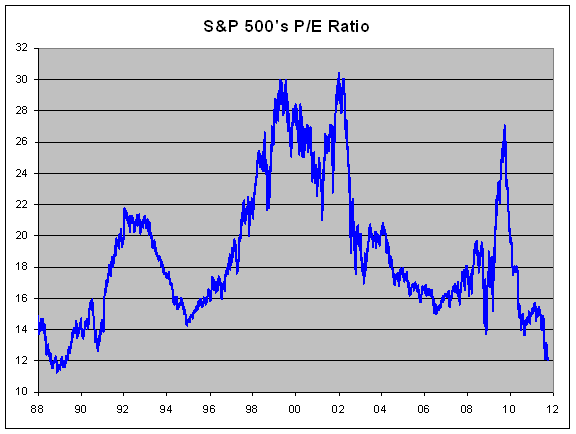

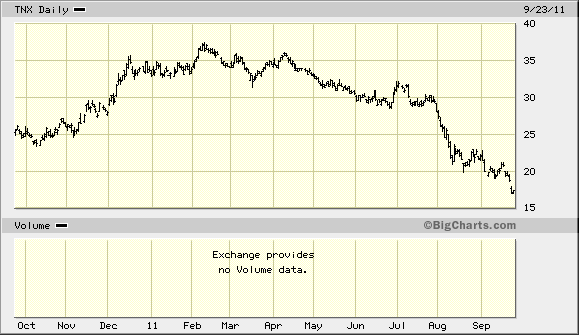
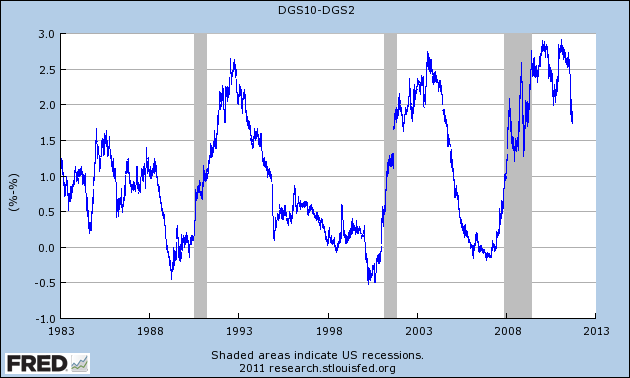
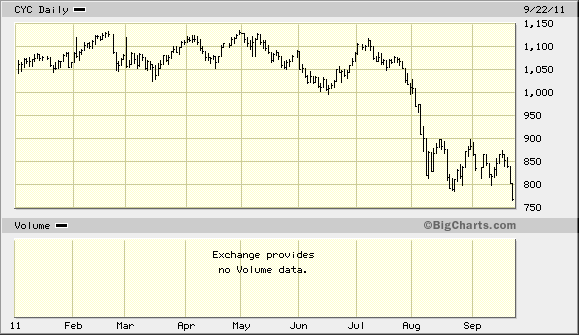
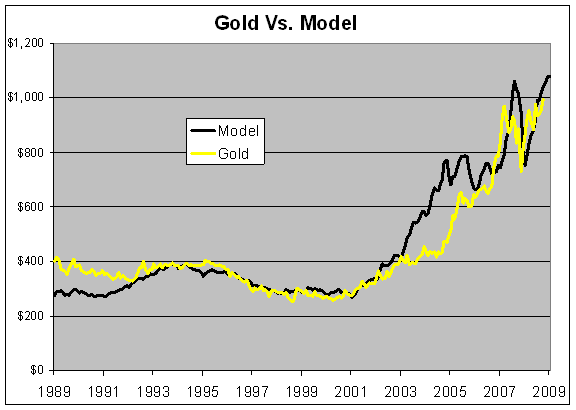
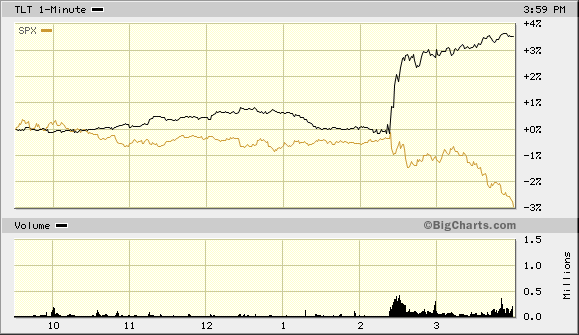
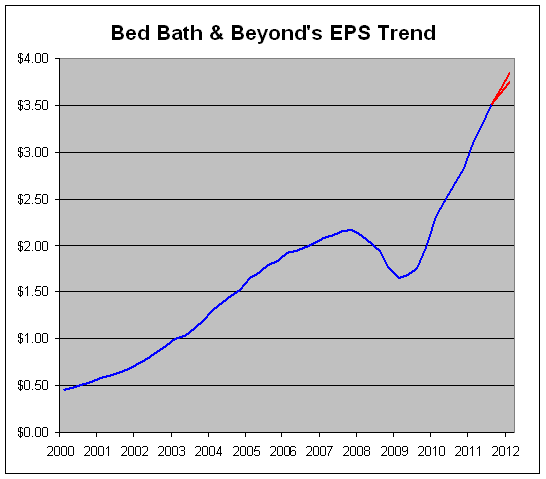
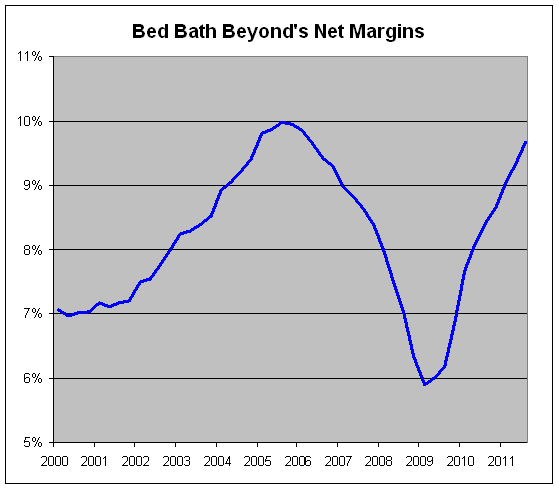
 Eddy Elfenbein is a Washington, DC-based speaker, portfolio manager and editor of the blog Crossing Wall Street. His
Eddy Elfenbein is a Washington, DC-based speaker, portfolio manager and editor of the blog Crossing Wall Street. His